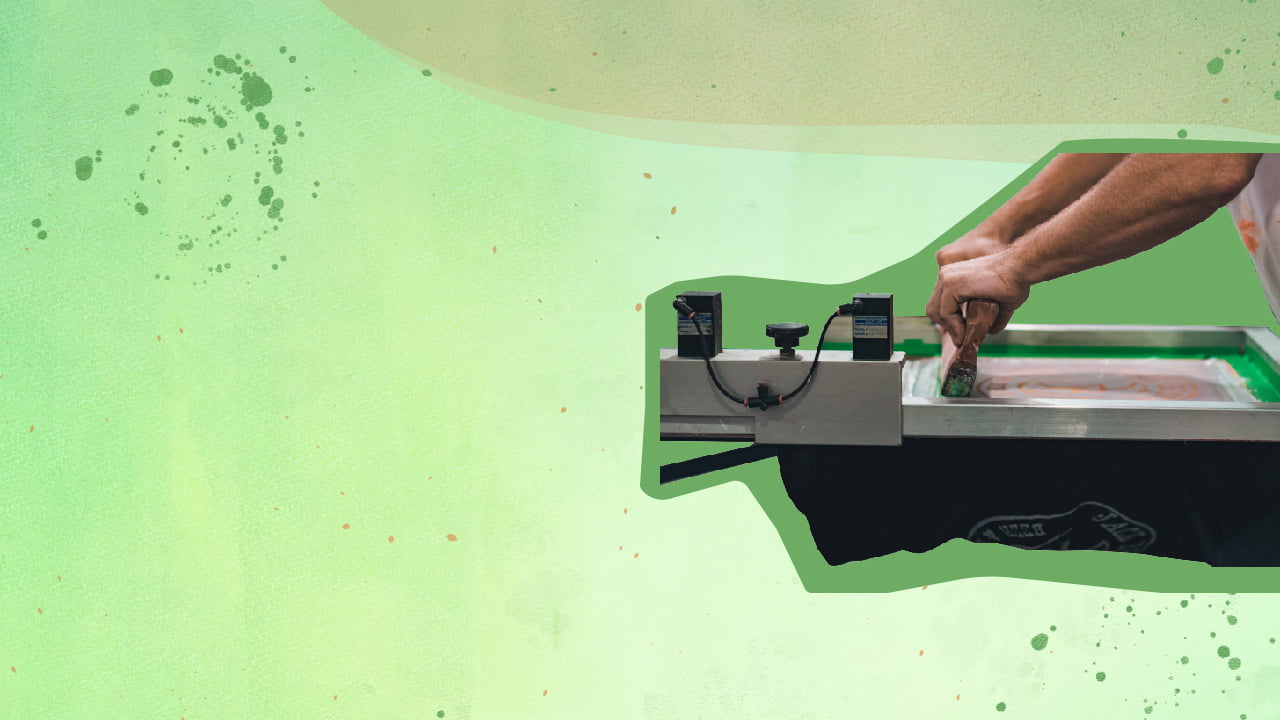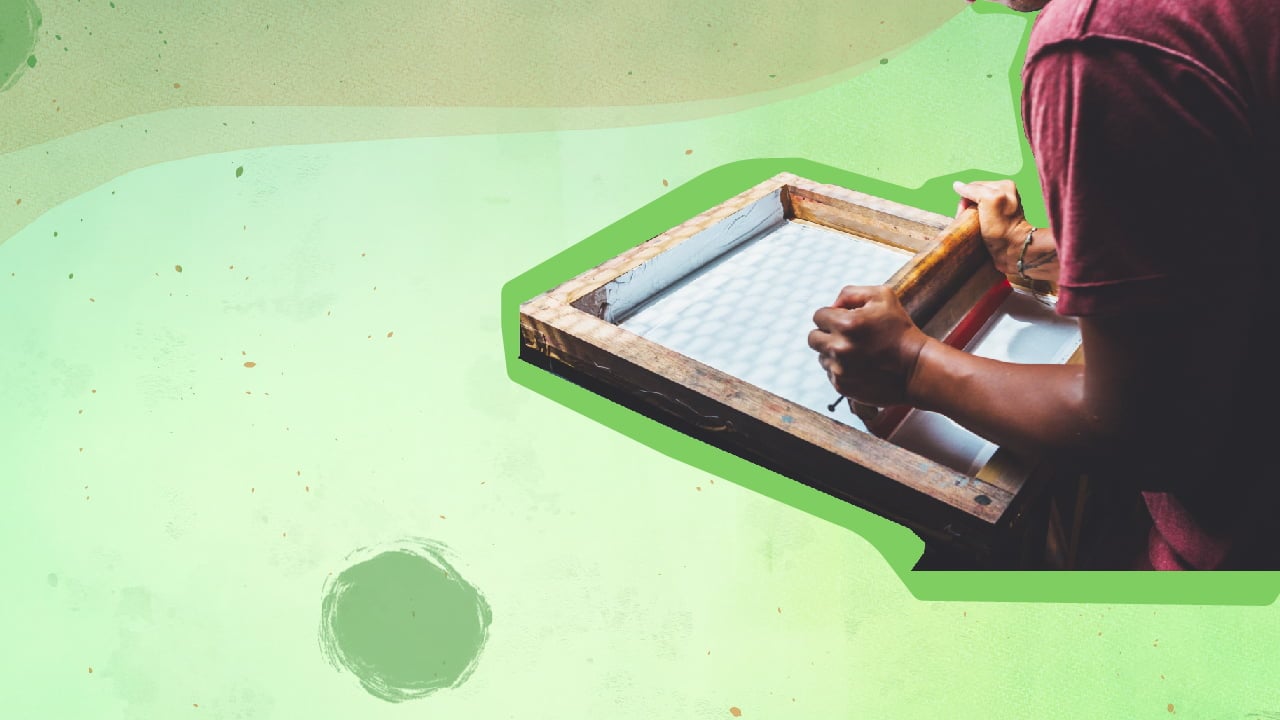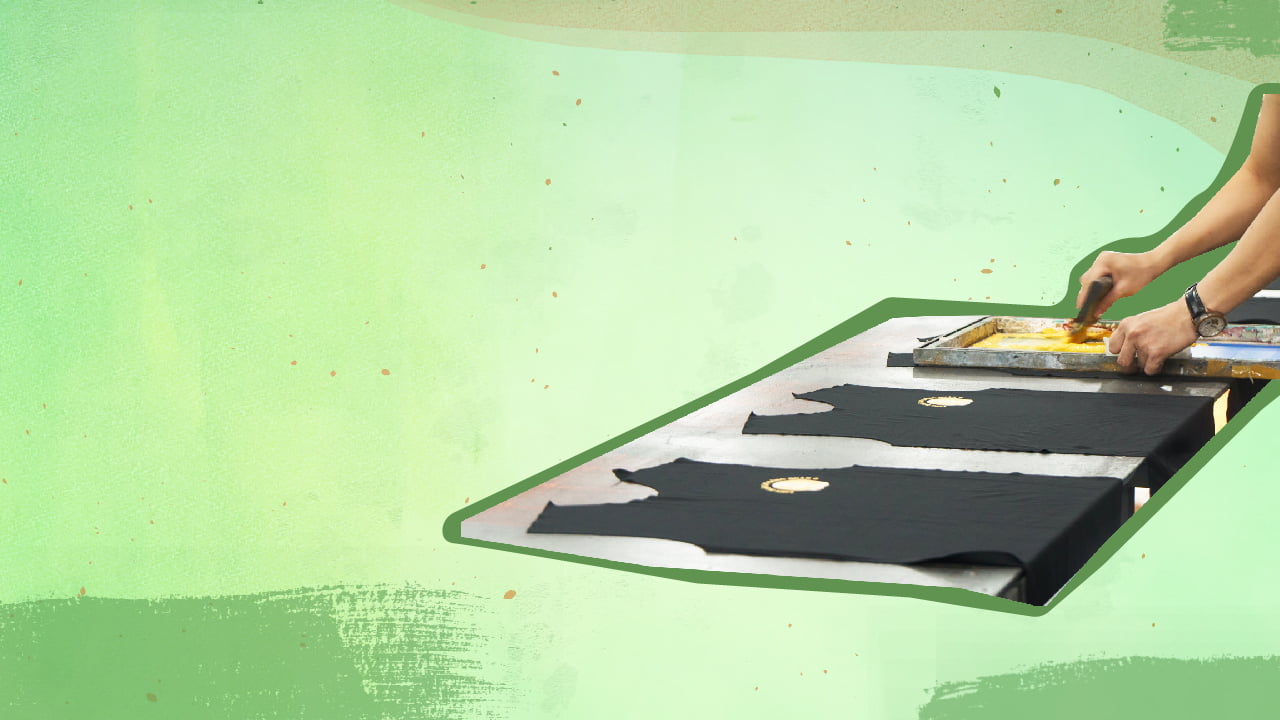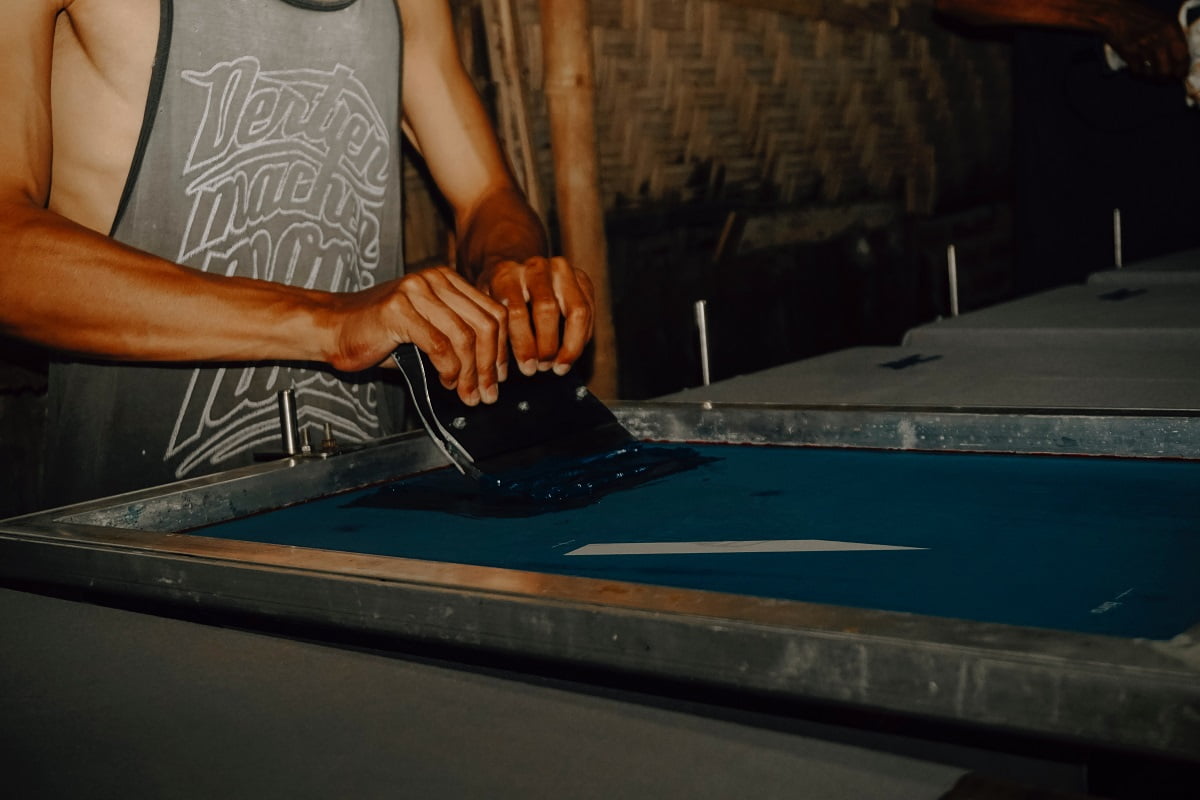A screen printing machine is used to print designs on items like clothing that are meant to be sold. But such machines are also used in several other industries for creating artwork, posters, medical devices, electronics, etc.

If you’re thinking of starting a screen printing business, you may be searching for the best screen printing machine. But finding the right screen printing machine isn’t an easy task since there are several units on the market.
You need to have proper knowledge about how they function to find the most suitable one. That’s why I’ve shared this guide explaining all about screen printing machines here to help you out.
Screen Printing - What Is It And Why Is It Used?

Screen printing is a printing process where ink is pressed through a mesh onto a substrate to create a printed design. This printing process is used in many industries, including clothing, art, electronics, and even for manufacturing medical devices. But its most popular use is for creating custom clothing products, like printed t-shirts.
Also known as serigraphy, screen printing has multiple forms, such as spot color screen printing, grayscale printing, halftone printing, and more. Another common name for the process is silk screen printing since silk was traditionally used for creating the screen used in the printing process.
The primary reason why screen printing is so popular is that the designs are printed in very vivid colors. Additionally, the ink is applied to the surface in multiple layers, which makes the item tactile and pleasant to touch.
With screen printing, it is even possible to print the same design several times using the same stencil. This means that creating multiple copies of the accessory or clothing is easy, and large batches of products can be manufactured efficiently.
Screen printing further allows the creation of highly detailed designs, though this limits the number of colors that can be used despite the color combinations being intense.
Origin And History
It is an ancient technique that was first used in China around 950 AD for printing designs on fabrics. But the technique was later adopted by Japanese artisans for transferring patterns onto paper with the help of a hard brush. Moreover, the pigment was pressed through a screen that was made using human hair.
In the 18th Century, screen printing arrived in Europe, though it did not become very popular immediately because silk was very expensive at the time. As silk became easier to import, thanks to the Silk Road, its cost went down, which led to screen printing becoming more widespread.
Then, photo-sensitive emulsions began to be manufactured by the early 20th Century, and these made the process of creating detailed stencils easier. During the 1930s, screen printing became popular as a medium for art, and was referred as serigraphy.
Thus, screen printing was used as a form of fine art, and artists like Andy Warhol and Eduardo Paolozzi utilized it for their work during the 1960s. Often called pop art, this method was used to create multiple copies of the same image. And Andy Warhol’s Marilyn Diptych is one of the most famous examples of this art form.
In modern times, screen printing is used both as an art form and for commercial printing purposes, perfectly suited for producing large batches of custom clothing.
Other Uses Of Screen Printing
Being much more versatile than most other printing techniques, screen printing can be used for different purposes. It also does not require pressure to be applied for printing, as in lithography and etching, while the surface does not need to be completely plain.
What’s more, screen printing can be done with different inks and on various materials, including ceramics, glass, paper, wood, metal, and textiles. That is why it is used across many industries for manufacturing items like balloons, medical devices, decals, clothing, displays, signs, and electronics.
Screen printing is also used in the manufacture of wafer-based solar photovoltaic (PV) cells, where the silver buses and mesh have to be printed. In printing electronics like solar cells, screen printing becomes indispensable because it allows you to control how thick the print should be.
Additionally, the size of solar wafers is increasing while their thickness is getting reduced. This means the printing process has to be carried out carefully to minimize breakage, which is possible with this printing method.
The Process Of Screen Printing
In its most basic form, screen printing involves the creation of a stencil on a mesh screen through which ink is pressed onto the surface underneath. While the screen printing process remains the same in most cases, the creation of the stencil can vary.
Common methods used for preparing stencils include applying vinyl or masking tape to cover selected parts, screen blockers like lacquer or glue, or a light-sensitive emulsion. The mesh is usually made of polyester, though stainless steel and nylon ones are also available.
Selecting the right mesh depends upon the texture of the surface, the complexity of the design, and the size of the mesh. Once the mesh is selected, it is coated with a light-sensitive emulsion on which the design is placed.
When exposed to light, parts covered by the print design remain liquid, while the uncovered parts solidify. After exposing the stencil for a predetermined amount of time, the emulsion is washed, and the screen is dried before being placed on the screen printing machine.
The piece of clothing to be printed is placed below the screen after which the screen is then lowered, and ink is added for printing. Most businesses use an automatic rotary carousel printer, whereby multiple screens can be used simultaneously. This also allows them to apply different colors quickly.
For multicolored designs, multiple screens are used, as only one color can be printed at a time. After the printing process is complete, the screen is washed to remove the emulsion so it can be used again with new stencils.
This is an important aspect, which is why employees need to learn how to clean screen printing machines properly.
Mechanism Of A Screen Printing Machine
Screen printing machines usually have a squeegee or blade that moves across the surface of the mesh screen. This pushes the ink through the mesh, after which the blade movement is reversed to allow the screen to touch the surface material.
Generally, in an automatic screen printing machine, there is an electric or pneumatic center, around which the printing stations are arranged similar to the spokes of a bicycle wheel. Then the clothing on which the design has to be printed is placed on rotating platens, also called print pallets. These rotate around the machine allowing each piece of clothing to be colored.
Individual print stations are represented by the spokes, and the number of print stations and screens determines the type of printing machine. For instance, a screen printing press with 4 stations and 6 screens is referred to as a 6/4 press.
One thing to understand here is that a screen printing machine will always print fewer colors than it should be able to. The reason is that the process requires the use of flashing and cooling stations. Flashing stations allow the clothing to be cured, improving the printing quality, while cooling stations let them cool before the next round of printing.
Several types and sizes of screen printing machines are used for printing different items, but they can generally be classified into automatic and manual screen printing presses. In a manual screen printing press, a worker has to move the squeegee for printing while there is no need for manual labor in automatic screen printers.
Usually, businesses involved in screen printing begin with manual machines and shift to automatic ones as they grow and expand.

Screen Printing Equipment
To be able to use a screen printing machine most effectively, it is important to learn about the various pieces of equipment and their functions.
1. Screen Printing Press
A screen printing press can make the printing process more efficient by printing multiple items easily. The purpose of the press is to hold the screen during the printing process so that the operator can replace the items to be printed.
3 types of printing presses are used for screen printing; automatic, semi-automatic, and manual. As the name indicates, an automatic screen printing press does not require manual input, while semi-automatic ones require limited human input. And manual presses need to be operated by hand.
When large quantities of items need to be printed, fully or semi-automatic presses are most suitable. These presses minimize errors, help speed up the process, and make printing more efficient. On the other hand, a company that operates on a smaller scale can rely on a tabletop or hand bench press.
2. Inks
Inks or pigments are used to press against the mesh screen so that the stencil design gets printed onto the t shirt or other item. But selecting the right inks is not as simple because different types of inks create various effects.
Some common inks that can be used include puff inks, texturized inks, or glittery inks each resulting in a unique appearance. Also, you need to consider the fabric type on which the design is to be printed since certain inks work better on particular materials.
In the case of clothing items, machine washable ink that has undergone heat treatment is generally used. This results in designs that can be used multiple times without fading away.
3. Screen
Screen printing requires a mesh screen that has a wooden or metal frame on which a mesh fabric is spread out. Modern screens use polyester fabrics instead of silk, which deliver similar results but are much more affordable.
But the thread count and thickness of the mesh depends on the texture of the material that has to be printed. As a rule, threads that have smaller spaces in between result in more detailed prints.
After coating the screen in emulsion and exposing it to light, it can be used as a stencil. And the emulsion can be washed off afterward so that the screen is ready for printing another design.
4. Squeegee
The squeegee is a rubber blade that is attached to a long handle made from plastic, metal, or wood. Its purpose is to press the ink through the screen onto the material which has to be printed. The size of the squeegee depends on the size of the frame of the mesh, as this ensures proper coverage.
Apart from the squeegee size, the firmness of the rubber blade can vary, and a firmer blade is more suitable for printing highly detailed designs. It can ensure that even the tiniest openings on the stencil get a uniform layer of pigment.
Meanwhile, a squeegee with a softer blade is generally used for painting fabrics or a less intricate design.
5. Washing Station
After they have been used, mesh screens need to be washed properly to remove the emulsion coating. In the case of large printworks, huge tubs of acid or cleaning fluid may be used to clean the mesh. Alternatively, a power hose, sink, or trough can be used to remove the emulsion.
Comparison Of Screen Printing With Other Printing Methods
1. Screen Printing Vs Digital Printing
DTG, or Direct To Garment printing, is a digital printing method used for fabrics and requires a specialized printer, similar to an inkjet computer printer. This prints the image directly onto the fabric or other surface.
The biggest advantage of this printing method is that multiple colors can be printed simultaneously without layering since there is no use of a stencil. Because of this, DTG printing is perfect for printing very colorful or detailed designs.
Moreover, DTG printing does not require a complicated setup as in screen printing, so it is more cost-effective and can even be used to print single items or small batches. It uses a computerized image, which produces highly detailed and even photographic images.
The only downside to this printing method is the colors are applied using CMYK-style dots instead of solid ink blocks. So, the completed image does not offer as intense colors as screen printing.
Also, it is not possible to create textured prints using a digital printer.
2. Screen Printing Vs Heat Transfer

Heat transfer printing utilizes heat to print a design on any surface. In this method, the design is printed onto a material that has a heat-reactive adhesive coating applied to it. This is called sublimation or transfer paper, and when a heat press is applied to it, the adhesive sticks to the material underneath, creating a design.
Unlike screen printing, heat transfer is good for small orders, proves more cost-effective, and is much easier to use. It can print detailed designs on different items, such as footwear, bags, and hats.
Heat transfer printing can also be used with digital printing methods, and this process is known as digital heat transfer printing. In this, the design to be printed is created on the computer and printed onto a white transfer paper. Then, a plotter is used to cut it out along its digital outline for accuracy.
Once the transfer is complete, it is placed on the clothing item or other material, and heat treatment is done to make it stick to the fabric. With heat transfer printing, it is important to keep in mind that the quality of the printed item will depend on the quality of the materials used.
In recent times, this method has acquired a poor reputation because printers often use low-quality materials for the process. That is why proper techniques and good-quality materials are crucial for the best results.
3. Screen Printing Vs Laser Printing
When it comes to screen printing vs laser printing, both are among the most common industrial printing methods in use today. But while screen printing involves applying ink or pigment to the printing surface, laser printing uses a laser beam that removes or oxidizes selected areas of the surface material.
Being a more modern technique, laser printing results in greater efficiency and allows very precise printing. It is also better for the environment since less waste material is produced. But laser printing only allows the use of limited colors compared to screen printing and is more expensive, at least initially.
Most importantly, this printing method can only be used on select materials.
Why Should You Use A Screen Printing Machine?
The screen printing industry is growing rapidly, and the trend is expected to continue for several years. One of the reasons for this is that screen printing is versatile and finds use in many other industries.
Governments, educational institutions, electronics manufacturers, and technological industries are all now relying on screen printing. Additionally, with more and more online stores selling goods like custom clothing, on-demand printing has made this printing method an extremely lucrative venture.
At the same time, manual printing methods are becoming obsolete with the easier availability of automatic screen printing machines. Such machines have not only made the process faster and more efficient but have also led to a reduction in problems like workers suffering from carpal tunnel syndrome.
Because of these reasons, many people are looking to start a screen printing venture, and a screen printing machine can be an excellent investment.
Choosing A Screen Printing Machine
A screen printing machine is a huge investment, and you may need to spend thousands of dollars to get a complete setup. That is why planning carefully before using such a machine is crucial.
You also need to opt for the best brand, which can be a bit challenging since there are numerous options to choose from. Moreover, a screen printing business needs additional equipment, such as:
1. Heat Press Or Dryer
When printing with a screen printer, a dryer is used to cure the ink applied to the fabric by exposing it to a temperature of 350 degrees Fahrenheit.
2. Printing On Transparent Films
A printer that can print on transparent films is required for screen burning, which is the process of coating the screen with emulsion and exposing it to UV light.
3. Flash Curing Unit
This is used to cure the fabric when multiple colors have to be printed.
4. Exposure Unit Or Light Box
The light box is used to expose the mesh screen to UV light for hardening the emulsion.
5. Mesh Screen
Investing in a good-quality screen is vital to ensure that the completed fabric is of good quality.
6. Software
You need the right software for screen printing as they make it easy to create and sell the artwork. Several manufacturers offer starter kits that contain everything you need, but it should be kept in mind that entering the screen printing business can be quite expensive in the beginning.
And for those unfamiliar with screen printing, relying on a local printing shop may be a better choice.

What Is A Screen Printing Machine Used For Final Thoughts
Several printing methods are available, and many of them, such as laser printing and DTG printing, offer certain advantages over screen printing. But despite that, screen printing is still the most popular method, especially for creating custom goods like shirts, posters, and accessories.
The versatility of screen printing machines allows them to be used for various purposes. So, if you’re thinking of entering this business, this may be the perfect time to do so. Just make sure to consider factors like automatic or manual functionality, machine and screen size, multicolor support, and your budget when getting a screen printing machine.
Tip
Investing in a manual or semi-automatic printing machine is a good idea when just starting out, as more resources need to be conserved. Such machines are more affordable than fully automatic ones.
